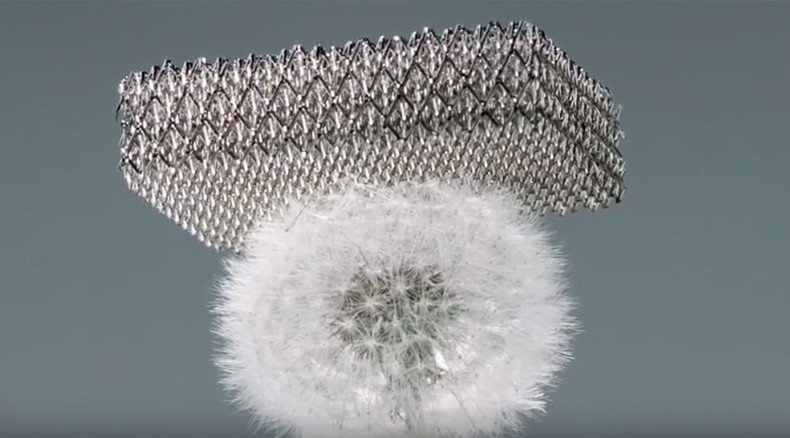‘99.99 percent air’: Boeing releases video of revolutionary lightweight metal

Boeing has released a video of its groundbreaking microlattice metal, which is “the world’s lightest material,” scientists say.
Microlattice is a 3D open-cellular polymer structure made out of small hollow metallic tubes, and represents a criss-cross diagonal pattern with small open spaces.
The video gives exciting examples of the substance’s possible use, such as new structural components in aerospace. Microlattice could save a lot of weight and make planes much more fuel-efficient.
Another example of the substance’s potential functions given by Sophia Yang, research scientist at HRL Laboratories, was the egg drop challenge: if you wrapped an egg in microlattice and dropped it from the 25th floor, you could easily win a bet as the substance would “absorb the force that the egg feels” and remain intact.
The microlattice was initially created in 2011, with the researchers saying that it is 100 times lighter than Styrofoam.
READ MORE: 100-fold: Origami planes may become reality as new technique makes paper much stronger
"The trick is to fabricate a lattice of interconnected hollow tubes with a wall thickness 1,000 times thinner than a human hair," lead author Dr Tobias Schaedler said.
Other ultralight substances that come to mind - aerogels and metallic foams – have random cellular structure, so they are less energy absorptive and strong.
The study was conducted at the University of California, Irvine, HRL Laboratories and the California Institute of Technology.












